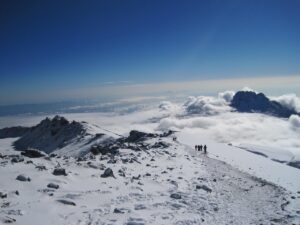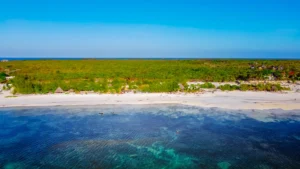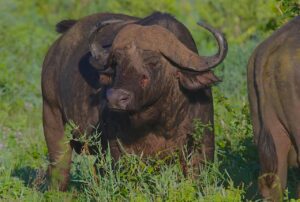
- +255 766 657 854
- info@snowafricaadventure.com
Mount Kilimanjaro is one of Africa’s most iconic landmarks, drawing thousands of adventurers from around the globe each year. This majestic mountain towers at an impressive height of 5,895 meters (19,341 feet), making it not only the tallest mountain in Africa but also the highest freestanding mountain in the world. The allure of conquering Mount Kilimanjaro height is a challenge many adventure enthusiasts dream of undertaking. However, the journey to the summit is no small feat, requiring hikers to brave rugged terrain, unpredictable weather, and the effects of high altitude. The reward, though, is unparalleled: standing atop the mountain and taking in the breathtaking views of the African plains below. In this article, we delve into the true height of Mount Kilimanjaro and explore the unique features that make it a bucket-list destination for adventurers worldwide.
Mount Kilimanjaro’s height is a staggering 5,895 meters (19,341 feet), crowning it as the highest point in Africa. The mountain is composed of three volcanic cones: Kibo, Mawenzi, and Shira, with Kibo being the tallest. The summit of Kilimanjaro, known as Uhuru Peak, sits atop the Kibo cone and is the highest point on the African continent. From this vantage point, hikers are treated to breathtaking panoramic views that stretch for miles across the African landscape.
Mount Kilimanjaro is a dormant volcano, with its last eruption occurring over 360,000 years ago. Situated near the equator, its unique geographic location greatly influences the mountain’s climate. Kilimanjaro boasts five distinct ecological zones, each with its own unique flora and fauna. These zones include cultivated land, rainforest, heath and moorland, alpine desert, and arctic. The diversity of ecosystems makes the climb up Kilimanjaro a journey through a variety of landscapes, each more fascinating than the last.
The history of climbing Mount Kilimanjaro dates back to the late 19th century. The first recorded ascent was made in 1889 by German geographer Hans Meyer and his local guide, Yohani Kinyala Lauwo. Since then, Mount Kilimanjaro height has continued to attract adventurers from all corners of the globe, with thousands attempting the climb each year.
Over time, Kilimanjaro has become more accessible to climbers of varying experience levels. Today, several routes lead to the summit, each offering a unique experience. The most popular routes include the Marangu, Machame, Lemosho, and Rongai routes. These routes differ in terms of duration, difficulty, and scenery, allowing climbers to choose the path that best suits their preferences and abilities.
The best time to climb Mount Kilimanjaro is during the dry seasons, from June to October and December to March. During these months, the weather is more stable, and the trails are less treacherous, making the climb more manageable. However, the dry season is also the busiest, with many climbers flocking to the mountain. On the other hand, climbing during the rainy seasons (April to May and November) is generally not recommended due to the challenging weather conditions and slippery trails.
Mount Kilimanjaro height and prominence have made it the subject of many interesting facts. Here are a few:
Climbing Mount Kilimanjaro is a challenging endeavor that requires thorough preparation. Here are some tips to ensure a successful climb:
As mentioned earlier, the different routes to the summit of Kilimanjaro each offer unique experiences. Here’s a brief overview:
Climbing Kilimanjaro can be an unforgettable experience if approached with the right mindset and preparation. Here are some essential tips:
Climbing Mount Kilimanjaro is an adventure filled with challenges and rewards. Here’s what to expect:
Reaching the summit of Mount Kilimanjaro, standing at its awe-inspiring height, is an accomplishment like no other. The feeling of standing on the highest point in Africa, surrounded by breathtaking views, is a memory that will last a lifetime.
Climbing Mount Kilimanjaro is more than just a hike; it’s a journey through diverse ecosystems, a challenge to physical endurance, and an opportunity to stand on the roof of Africa. With its towering height and rich history, Mount Kilimanjaro remains a must-climb for adventurers seeking an unparalleled experience. Whether you are a seasoned climber or a first-time adventurer, the journey to Kilimanjaro’s summit is one you’ll never forget.



